The document discusses model-driven development using executable UML models. It addresses perceived issues with making UML models executable and proposes resolutions. The key benefits of executable UML models are that models can be more easily understood than code and kept in sync with development artifacts.


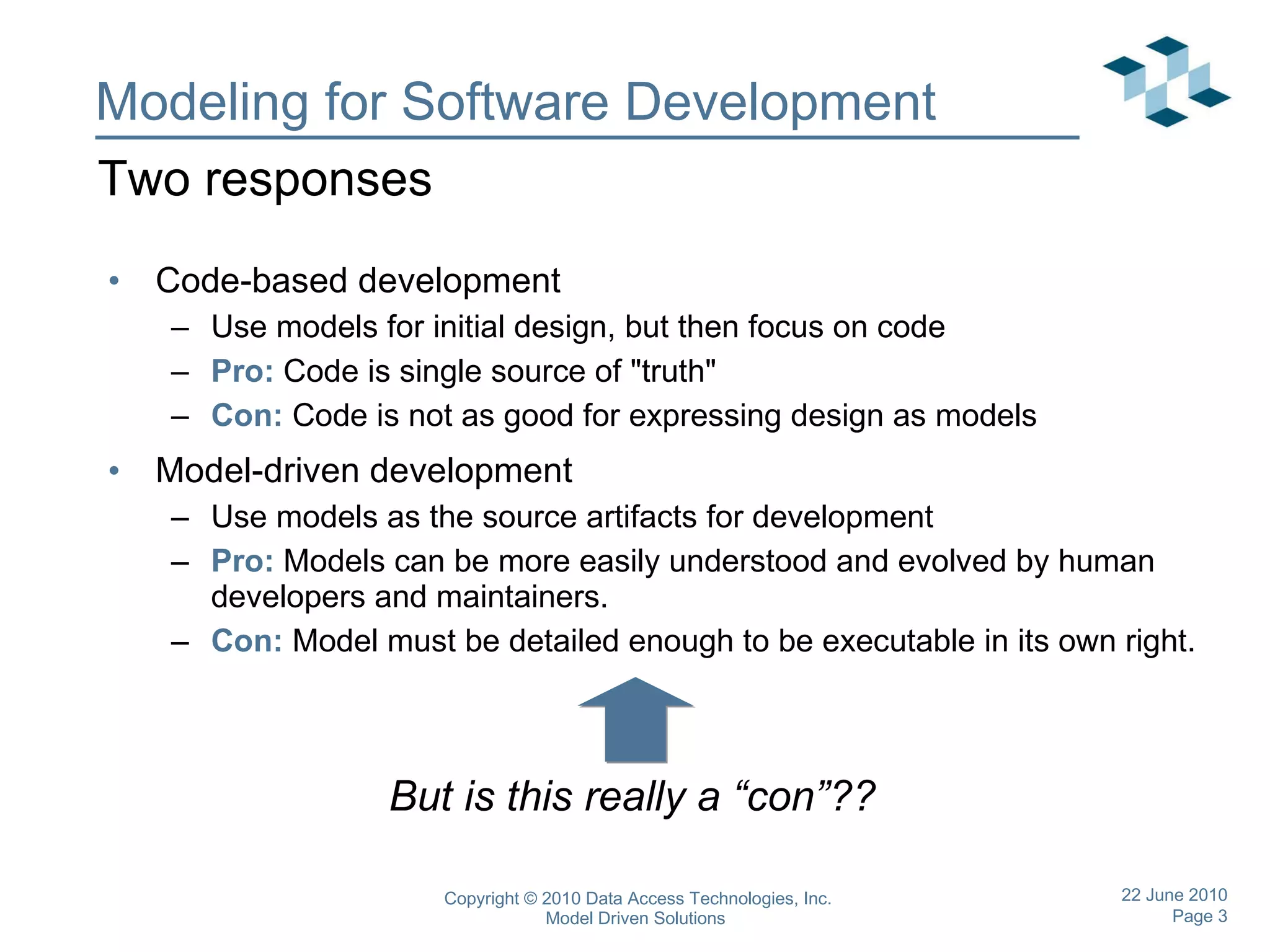
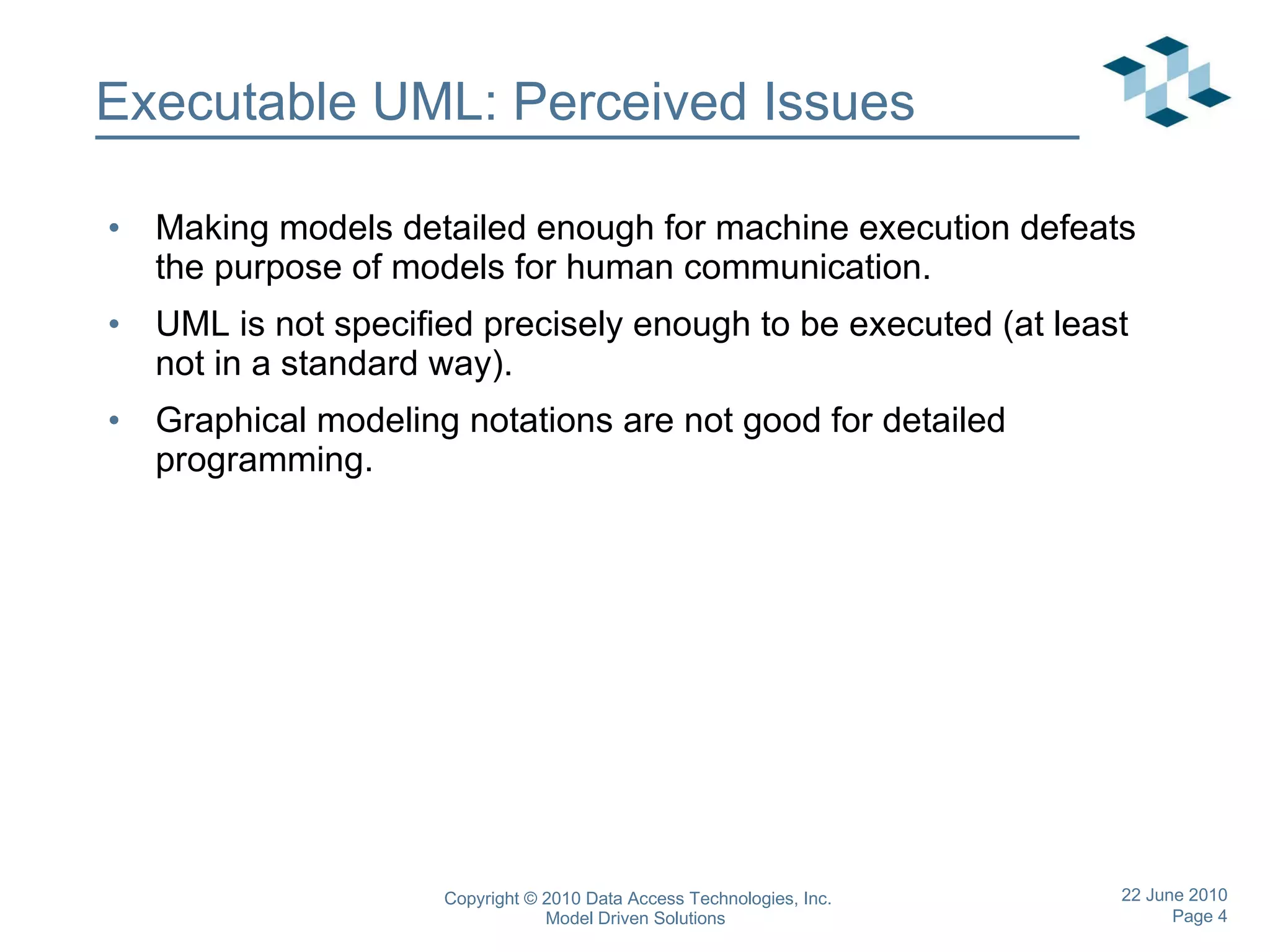
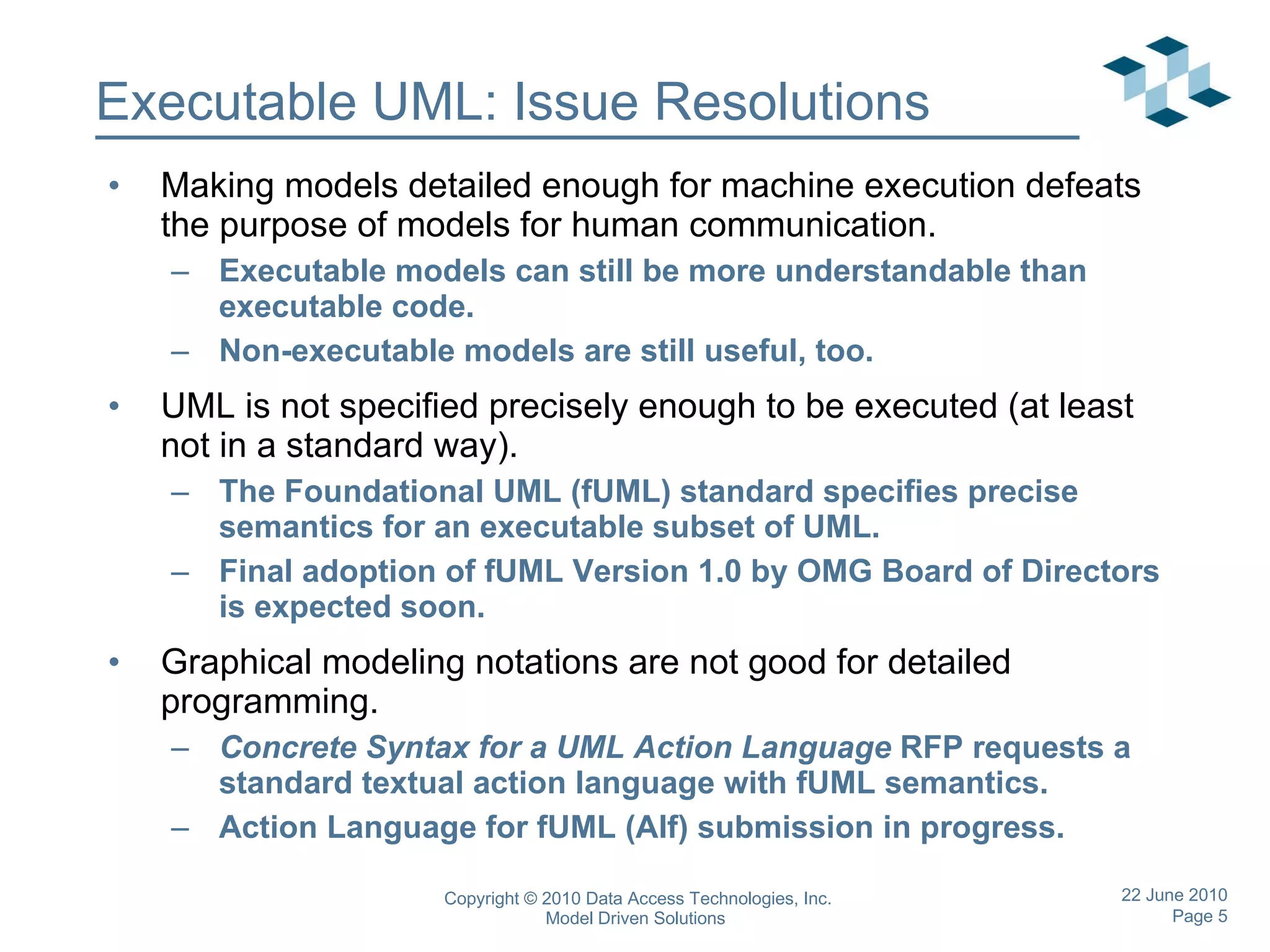
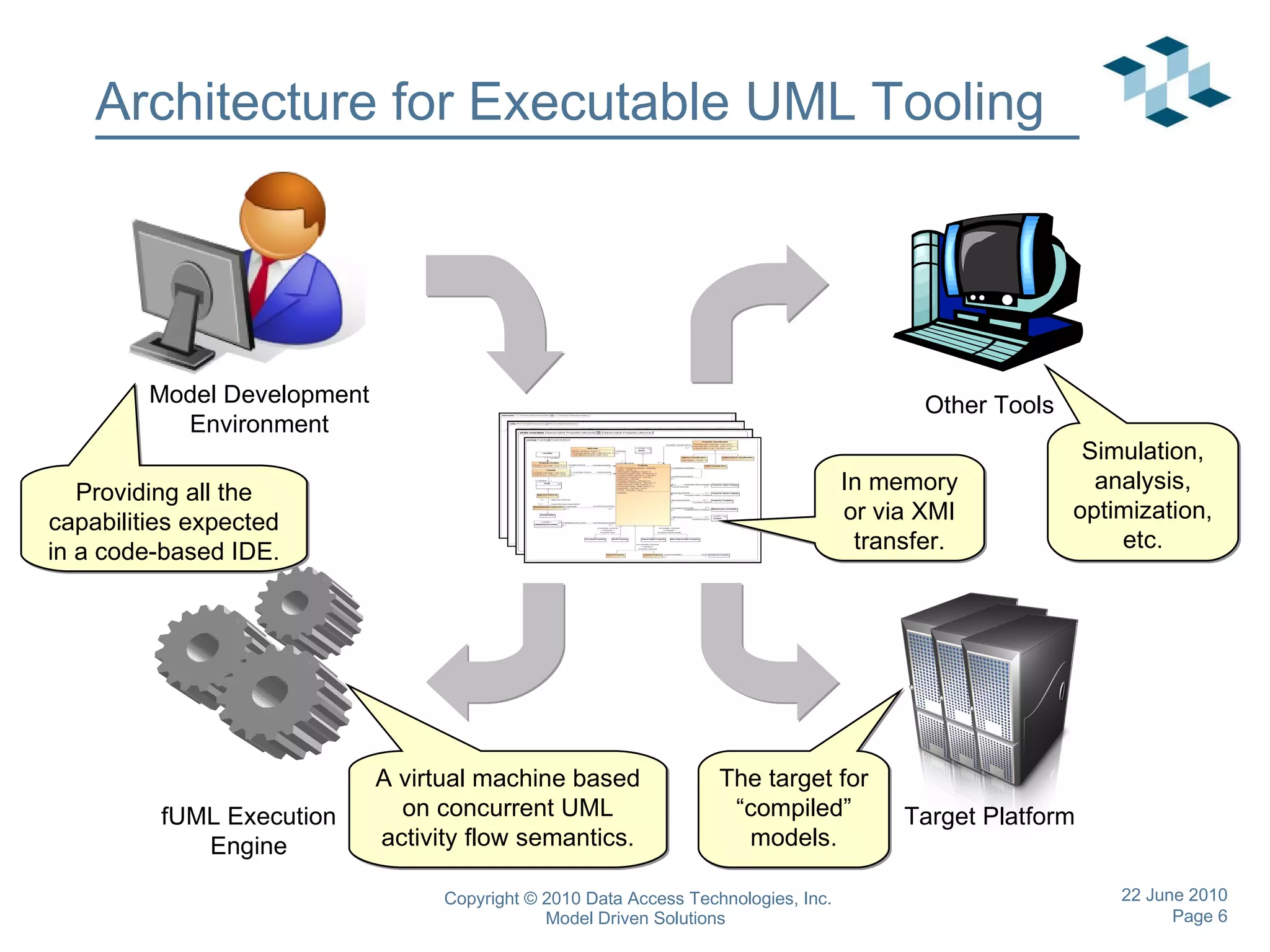
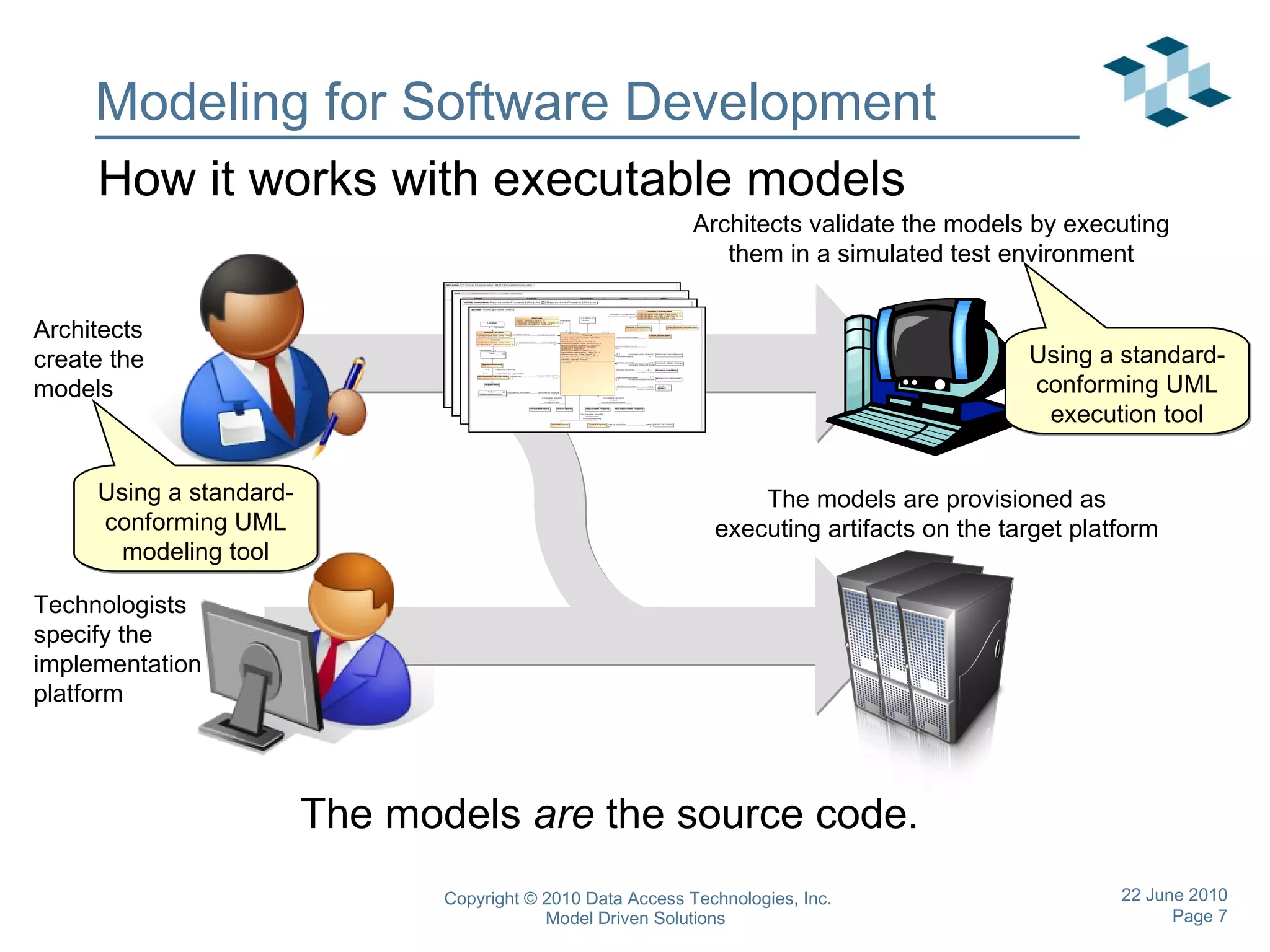
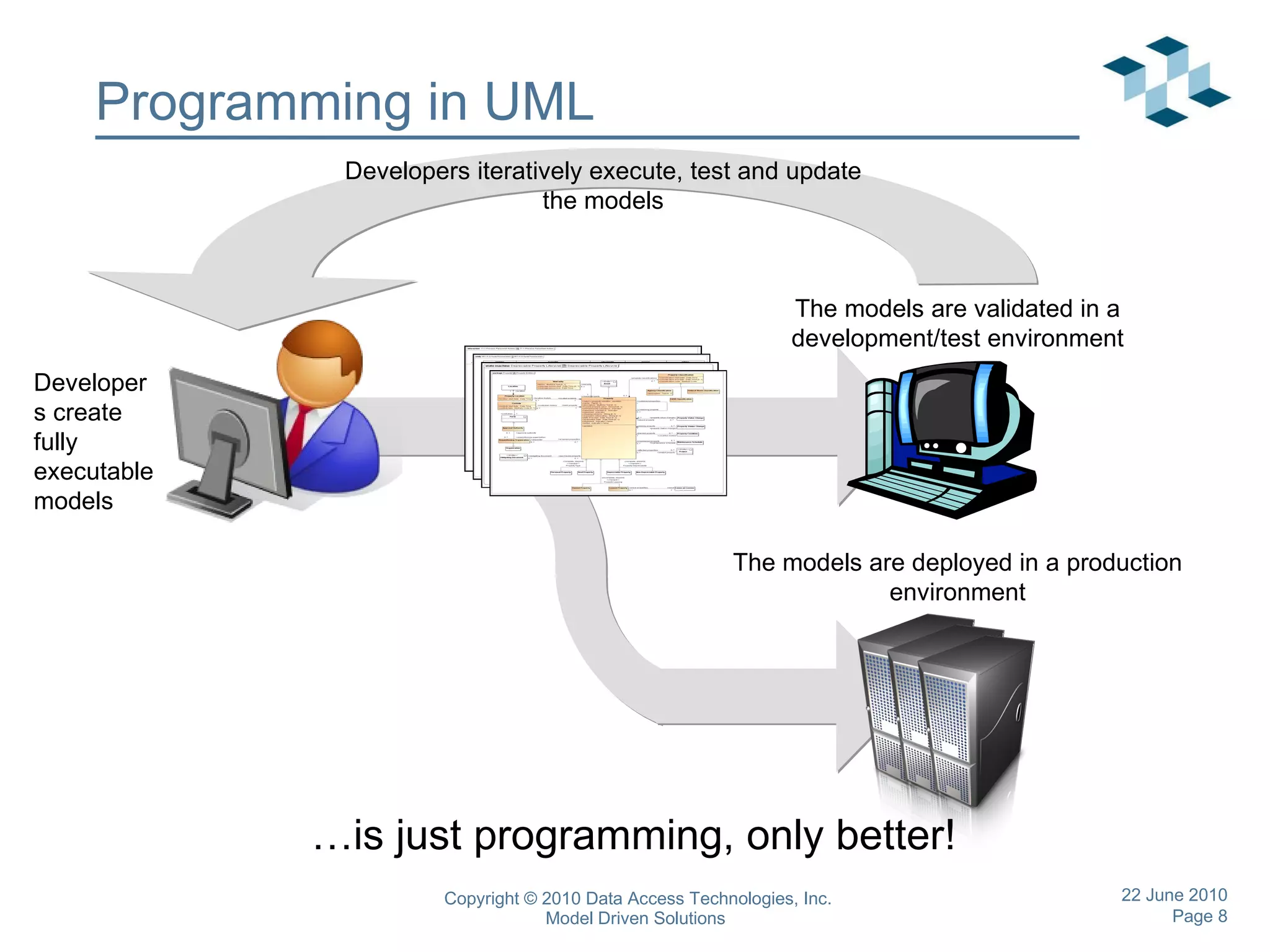
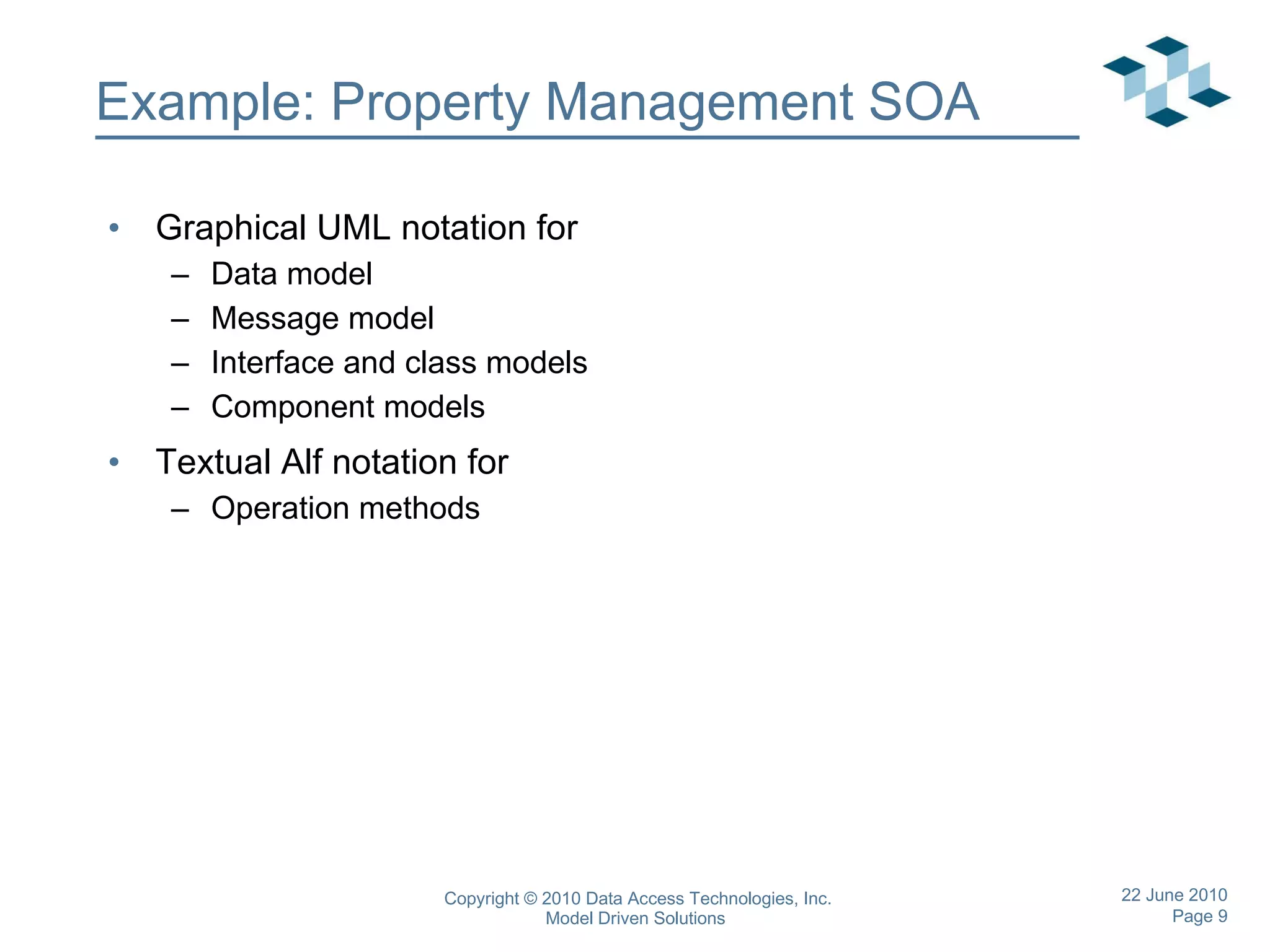
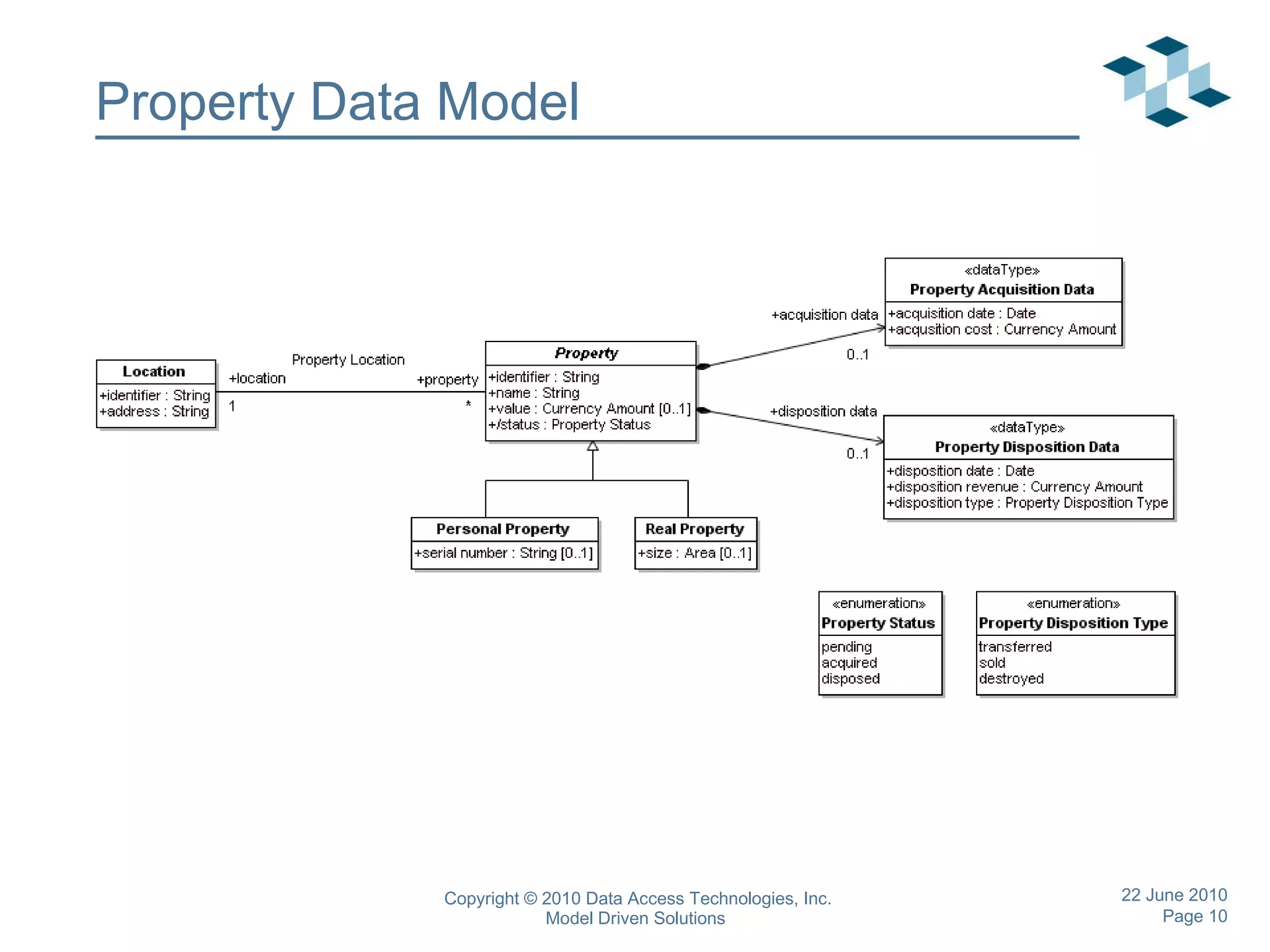
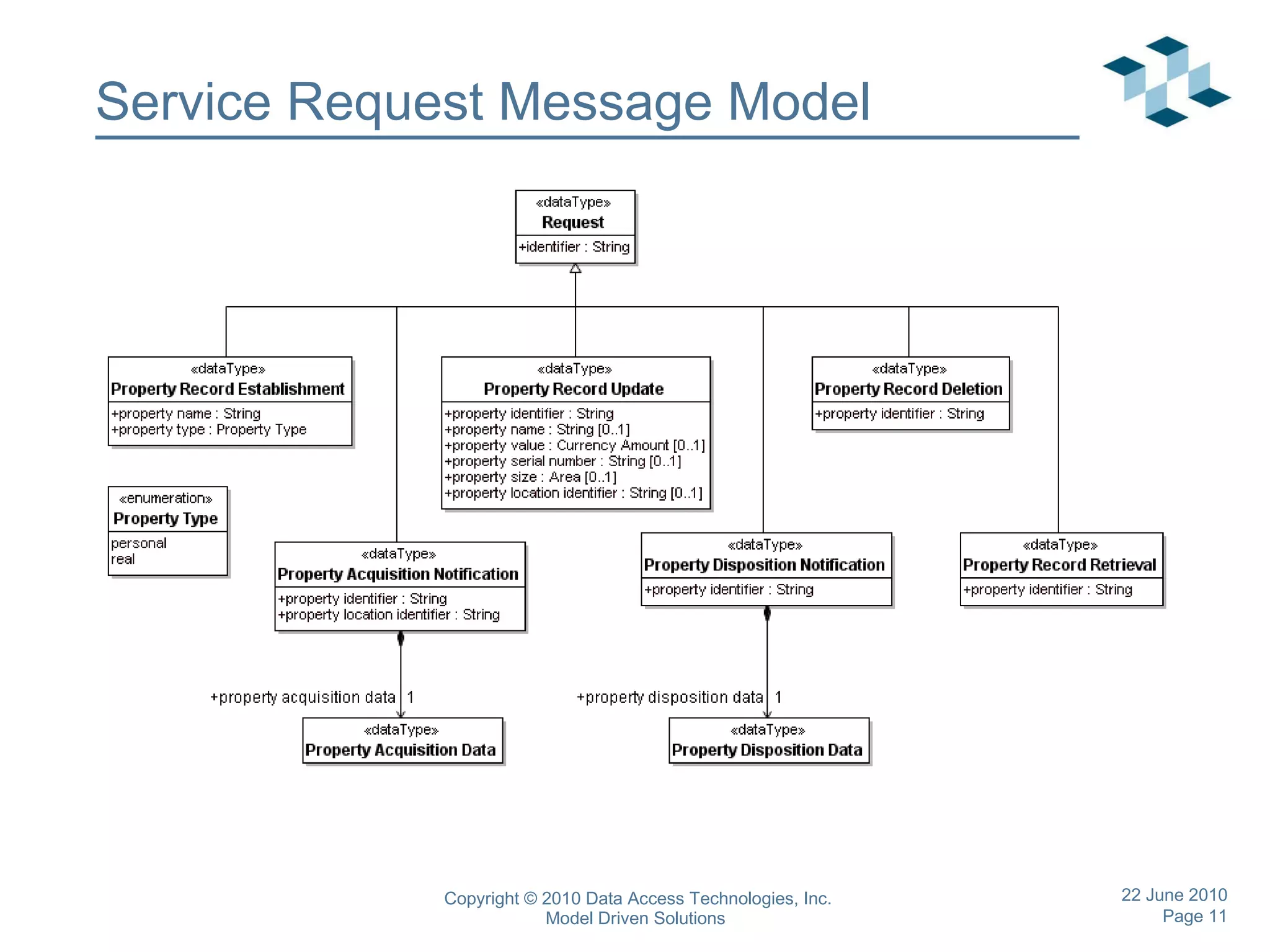
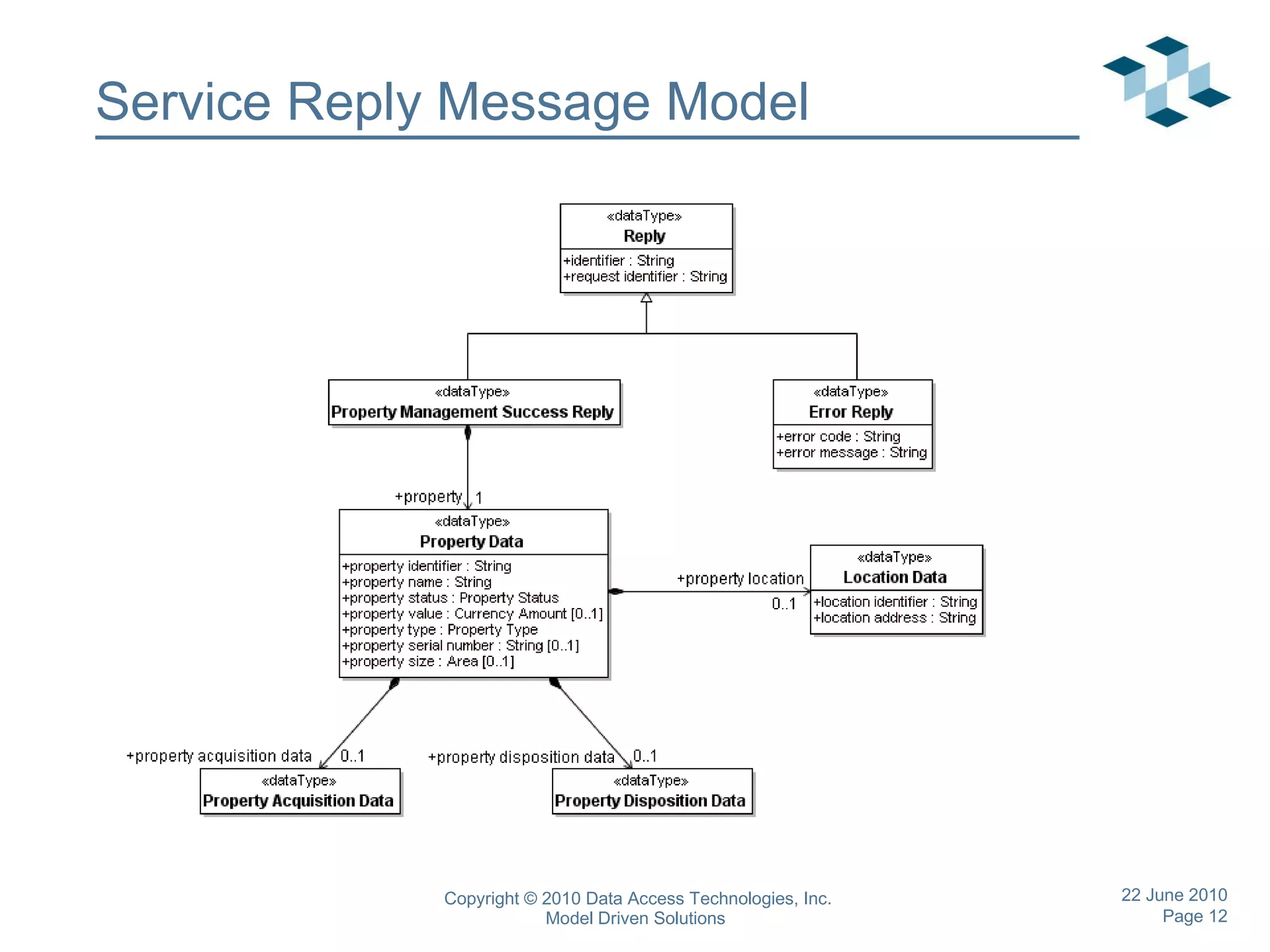
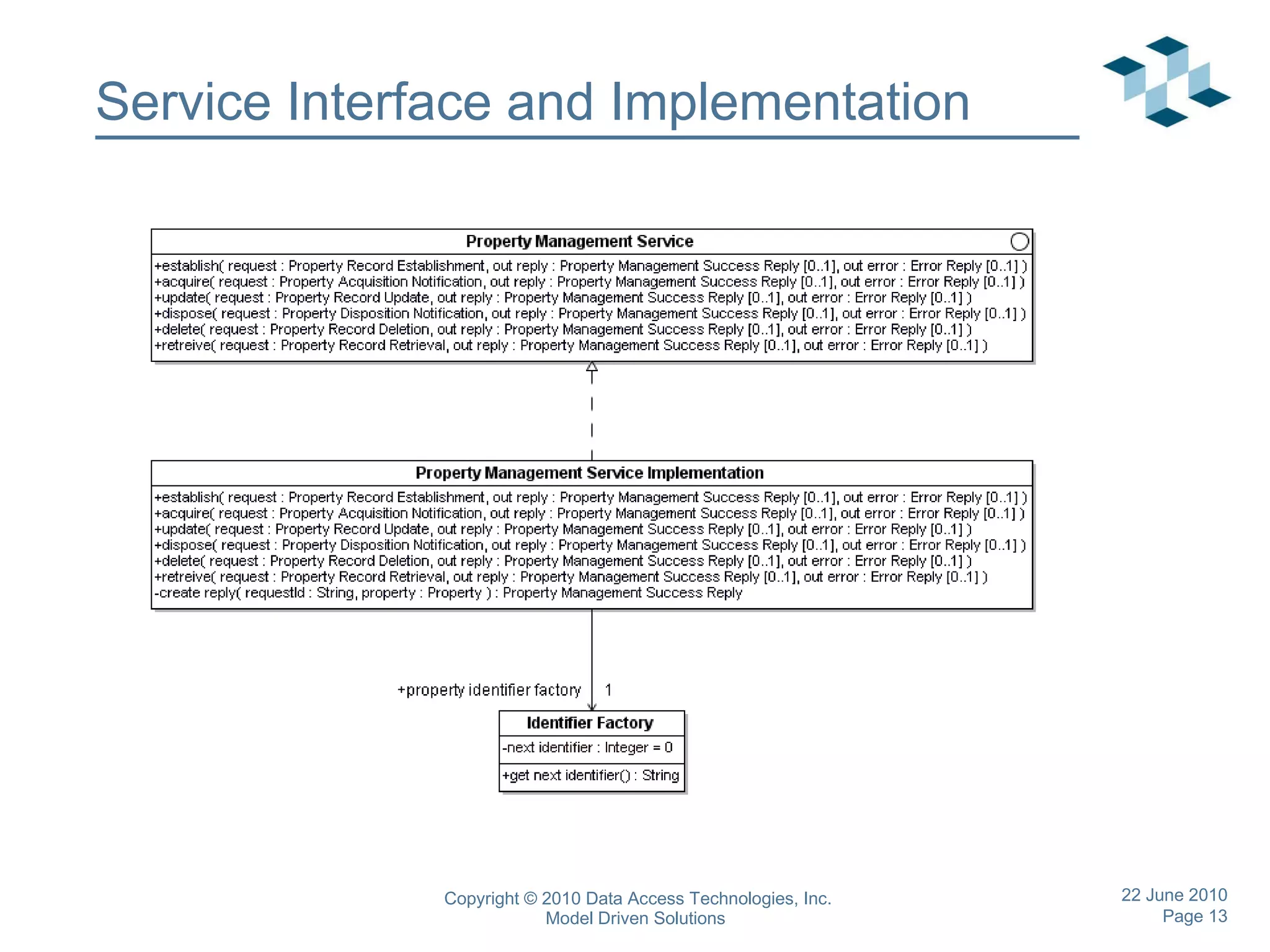
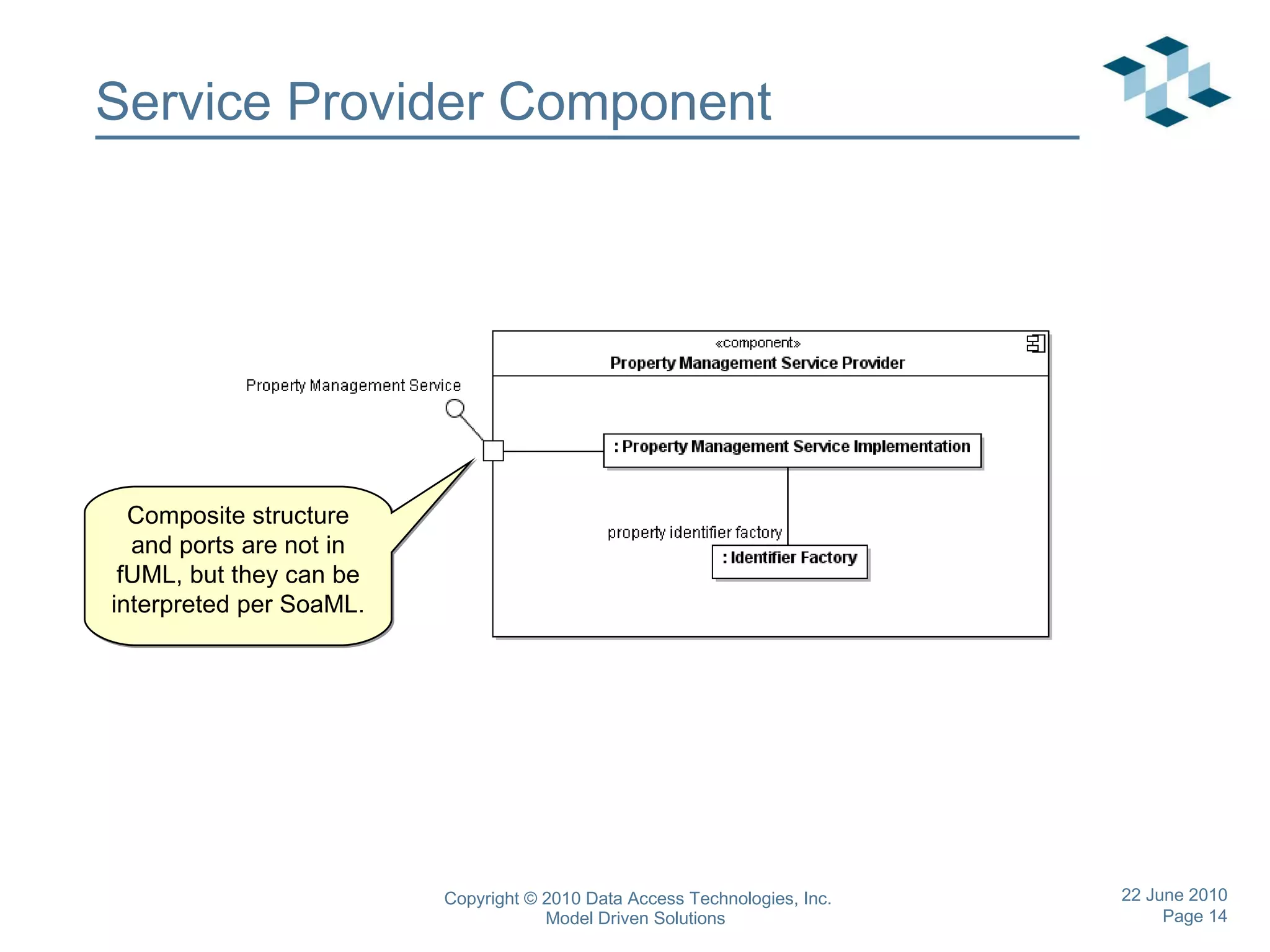
![Operation method: establish /** Establish a new property record. */ activity establish ( in request: 'Property Record Establishment', out reply: 'Property Management Success Reply' [0..1], out error: 'Error Reply' [0..1] ) { identifier = this.'property identifier factory'.'get next identifier'(); if (request.'property type' == 'Property Type'::personal) { property = new 'Personal Property'::'create property'(identifier,request.name); } else { property = new 'Real Property'::'create property'(identifier,request.name); } reply = this.'create reply'(request.identifier, property); } Operation methods are specified as UML activities. Newly created objects persist at the current execution locus. Names can have spaces or other special characters.](https://image.slidesharecdn.com/xuml-presentation-100622-programming-in-uml-100622225221-phpapp02/75/Programming-in-UML-Why-and-How-15-2048.jpg)
![Operation method: update /** Update the data of a property other than acquisition or disposition. */ activity update ( in request: 'Property Record Update', out reply: 'Property Management Success Reply' [0..1], out error: 'Error Reply' [0..1] ) { property = Property -> select p (p.identifier == request.'property identifier'); if (property -> isEmpty()) { error = new 'Error Reply' ( identifier => request.identifier + "/error", 'request identifier' => request.identifier, 'error code' => "PRU-001", 'error message' => "Property not found." ); } else if (property.status == 'Property Type'::disposed) { … } else { if (request.'property location' -> notEmpty()) { location = Location -> select loc (loc.identifier == request.'property location'); 'Property Location'.createLink(property, location); } … } } A “select” maps to a concurrent expansion region over a class extent. Creating a link automatically establishes a bidirectional relationship.](https://image.slidesharecdn.com/xuml-presentation-100622-programming-in-uml-100622225221-phpapp02/75/Programming-in-UML-Why-and-How-16-2048.jpg)
![References Foundational UML (fUML) Semantics of a Foundational Subset for Executable UML Models standard, http://www.omg.org/spec/fuml fUML Reference Implementation Project, http://www.modeldriven.org/fuml Action Language for fUML (Alf) Concrete Syntax for a UML Action Language RFP, http://www.omg.org/cgi-bin/doc?ad/2008-09-09 Submission repository, http://lib.modeldriven.org/MDLibrary/trunk/Applications/Alf-Reference-Implementation /doc – Latest submission document and current working draft /dist – Parser for latest working version (currently v0.08) Contact [email_address] http://twitter.com/seidewitz](https://image.slidesharecdn.com/xuml-presentation-100622-programming-in-uml-100622225221-phpapp02/75/Programming-in-UML-Why-and-How-17-2048.jpg)